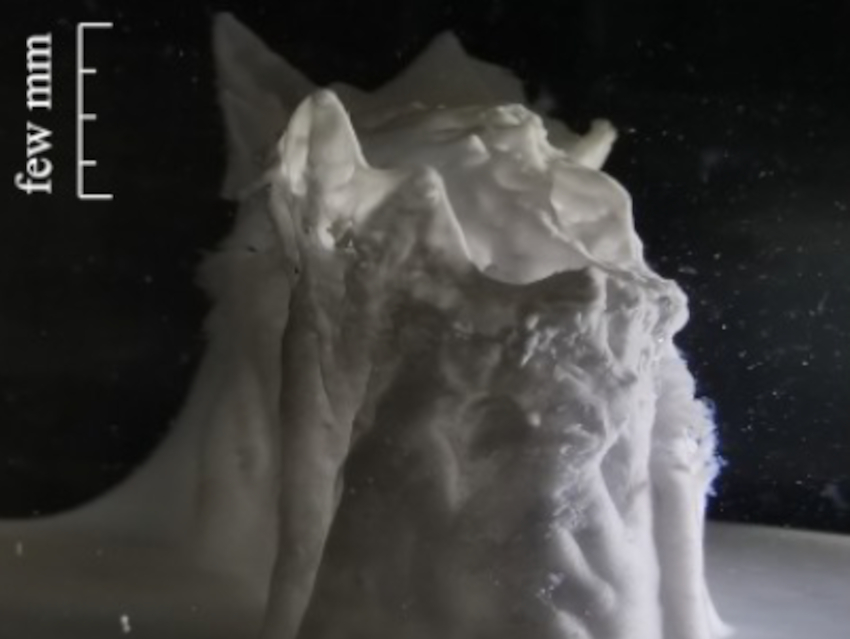The self-assembly of small precursor molecules driven by covalent and non-covalent interactions can allow the formation of larger and more complex nanostructures. The properties and functions of such self-assembled structures are often vastly different from the starting components. As one example, chemical gardens are self-assembled, sometimes “plant-like” structures formed from a soluble metal ion salt and various anions (for example, silicates, borates, or phosphates) in aqueous solutions. Chemical gardens could be relevant in prebiotic chemistry and investigations into the origin of life.
Lorenzo Sebastianelli, University of Modena and Reggio Emilia, Modena, Italy, and colleagues have synthesized an organic chemical garden using a tablet of cadmium(II) acetate immersed in an ethanol solution containing a high concentration of heptanethiol. At heptanethiol concentrations of 30–80 mM, the formation of sail-like structures was observed after 10 min, with the structures gradually growing to form tower-like assemblies (pictured). This growth was not observed when tablets of CdCl2 or CdSO4 were used in place of Cd(OAc)2.
The team studied the structures using multiple techniques, including X-ray powder diffraction, 13C MAS NMR spectroscopy, FT-IR, and SEM, and found that the material contains a single solid phase of a cadmium heptanethiolate with a microcrystalline structure featuring a central [CdnSn] cluster. In contrast, a fine white powder precipitate formed upon mixing a solution of Cd(OAc)2 dissolved in ethanol with a solution of heptanethiol. The powder is composed of a different phase and contains significantly more amorphous material. This shows that the reaction conditions are critical to control the growth and morphology of the formed structures and significantly influence the material’s properties.
- Self‐Assembled Structures from Solid Cadmium(II) Acetate in Thiol/Ethanol Solutions: A Novel Type of Organic Chemical Garden,
Fabrizio Bernini, Elena Castellini, Lorenzo Sebastianelli, Beatrice Bighi, Claro Ignacio Sainz‐Díaz, Adele Mucci, Daniele Malferrari, Antonio Ranieri, Maria Franca Brigatti, Marco Borsari,
ChemSystemsChem 2020.
https://doi.org/10.1002/syst.202000048




![Synthesis of [c2]Daisy Chains via Mechanochemistry](https://www.chemistryviews.org/wp-content/uploads/2025/04/202504_RotaxanesWithSolidStateMechanochemistry-125x94.png)